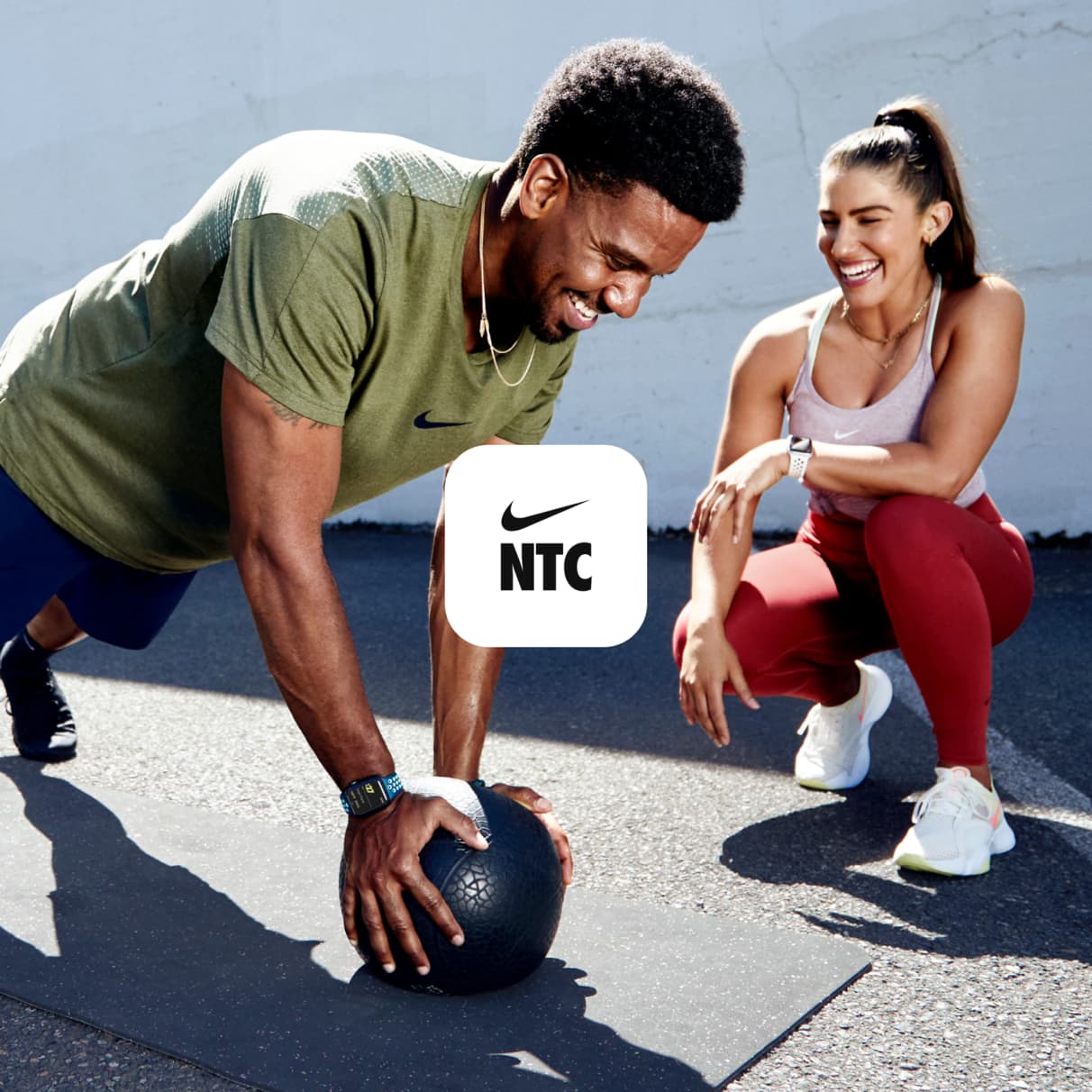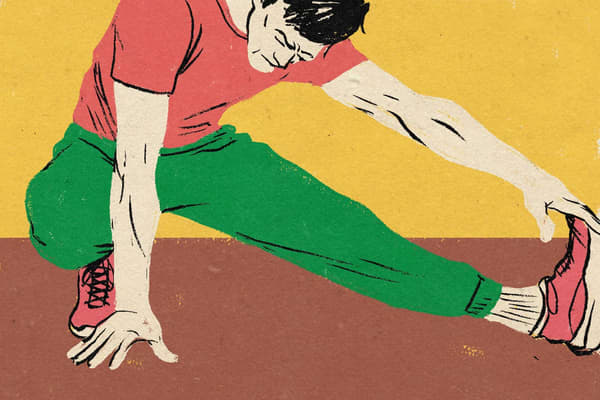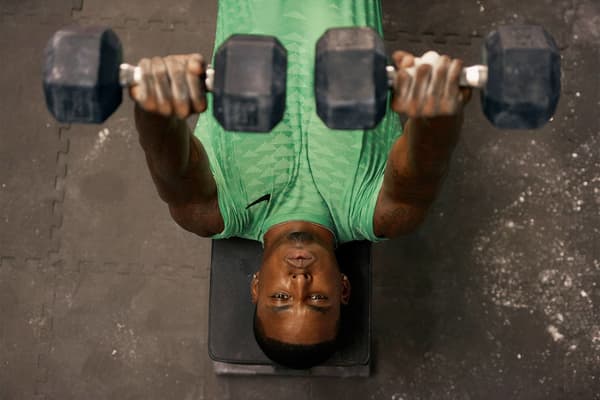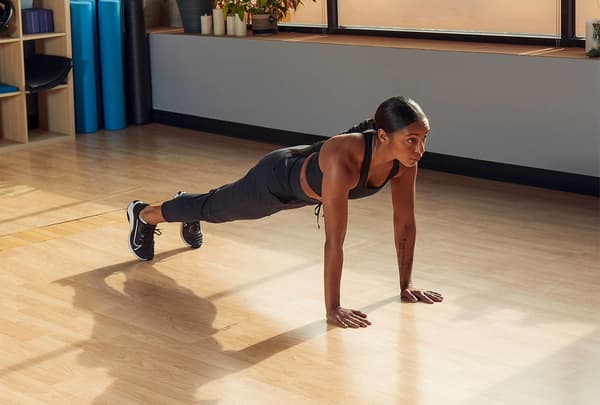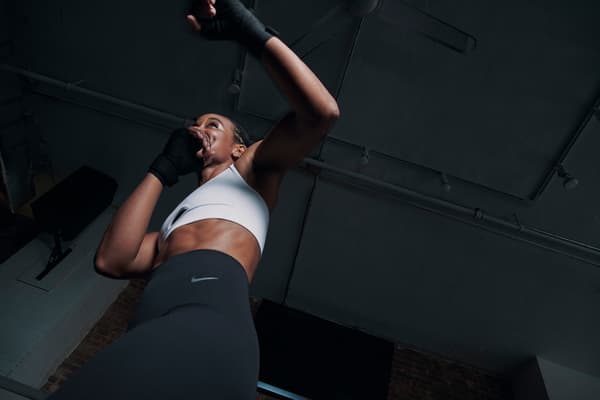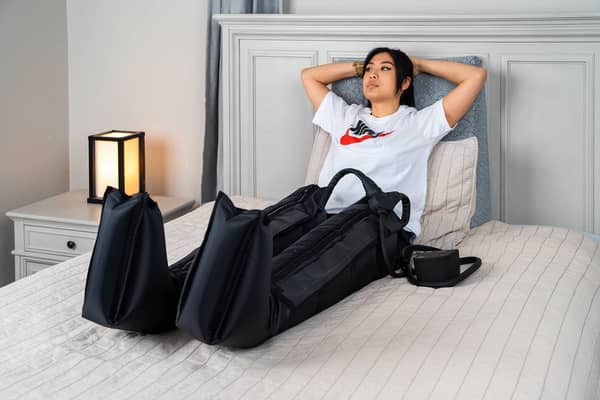The benefits of plyometrics training
Sport & activity
Power up your workouts with these exercises.

If you've ever wondered how pro athletes can generate so much power, look to plyometrics (or "plyo"). This high-impact and demanding type of sport training is built around quick, explosive movements, like box jumps, squat jumps and forward hops. Here's the lowdown on plyo, which Nike Well Collective Coach David Carson calls "the best power exercises you can do".
What Is plyometrics training?
Plyometrics refers to strength and conditioning exercises that improve the ability to quickly produce large amounts of force, according to the National Academy of Sports Medicine. First used decades ago to train Eastern European athletics competitors, it's now a staple for other athletes, such as basketball, volleyball, tennis and baseball players. "Plyometrics recruits your fast-twitch muscles, which may help you get faster or stronger when it comes to activities like sprinting and Olympic lifting", says Nike Well Collective Coach Betina Gozo.

How does it work?
- Eccentric (lengthening movement): In this phase (also called cocking, loading, readiness or preparatory), muscles are pre-stretched and store energy. Imagine basketball players bending their knees and lowering their arms before making rebound shots.
- Amortisation: During this very brief pause, muscles stabilise and prepare to release that stored energy. Since a shorter pause leads to a more powerful movement, plyometric training aims to reduce the duration of this phase of the cycle.
- Concentric (shortening movement): Here, muscles release that energy in an explosive movement, as in jumping for the basket.
What are the benefits of plyometrics?
Plyometric training helps with athletic performance and daily living. These exercises offer a great way to increase strength and power, which boosts so many movements in sport (like throwing, hitting, jumping and running), Carson explains. Specifically, according to NASM, plyometrics can increase vertical jump height; long jump distance; running speed, agility and quickness; as well as throwing, hitting and striking velocity.
Since plyo—which can include at-home exercises—also improves balance and agility, it can help enhance functional movement. Plyometrics can help add stability to daily movements. Other benefits of adding plyometric exercises to your workout routine include helping to maintain or boost your bone density, which decreases at an advanced pace as we age, Carson says. While Carson says plyometrics increase heart rate, they should not be considered cardio exercises: "Too much too soon will leave you injured and on the sideline of your favourite workouts".
What are the workout types?
Although most associate plyometric exercises with lower-body moves (like Star Jumps and Squat Jumps), this type of training can also include upper-body moves (like Medicine-Ball Slams, Plyometric Push-Ups and Chest Passes). Carson describes plyo movements using these four terms:
BilateralThese exercises use both legs at the same time. Carson calls them "a great introduction to plyometrics" and the "safest start". Examples: Star Jumps and jumping in place using both feet.
UnilateralHere, you use only one leg at a time. Ideal for all athletes (especially runners), these moves help identify and correct imbalances in the lower body, Carson says. Examples: Star Jumps alternating your feet and jumping in place on one foot.
ExtensiveThese lower-intensity moves help prepare the body for other activities like running, and can be performed for longer periods of time. Examples: Star Jumps, Skipping, Jumps-in-Place and single linear jumps (like one Plyo Box Jump).
IntensiveThese higher-intensity moves "should be prescribed carefully and with plenty of rest", Carson warns, adding, "You wouldn't hit a max deadlift for 10 straight minutes". Examples: Box Jumps, Squat Jumps, Split Jumps, multi-directional jumps, multiple linear jumps (such as a continuous set of Plyo Box Jumps) and dunking a basketball.

How to increase the difficulty over time
Plyometric programmes progress from emphasising stabilisation to strength and then power, according to NASM. Start with easier, simpler, stabler and more familiar movements with bodyweight only, like Step-Ups/Step-Downs on a low box or bench.
Once you master these moves, you can gradually ramp up the difficulty and complexity, shifting to less familiar and less stable movements. To increase the challenge, you can add weights, up the speed and impact forces (for instance, by positioning barriers to jump over) and vary the planes and directions of movement. Consider working with a personal trainer or exercise physiologist to help you design a programme and fine-tune your form.
What are the best shoes for plyometrics?
Since plyometrics training puts a lot of wear and tear on your joints, it's helpful to wear supportive footwear. Look for training shoes with arch and ankle support and enough cushioning to help absorb shock from hard landings. Soles should be flat rather than elevated to help keep you more stable and be made from rubber for traction. As a bonus, plyometric shoes should be breathable to help absorb sweat from your high-impact workouts. Pick up one of these pairs, then start your training programme.

A word of caution
The stakes are high with plyometric workouts. While this type of training can lead to sizable power gains, it can also result in significant losses in the form of injuries. As always, before adding a new form of exercise to your programme, make sure you consult with your healthcare provider.
Words by Dina Cheney
